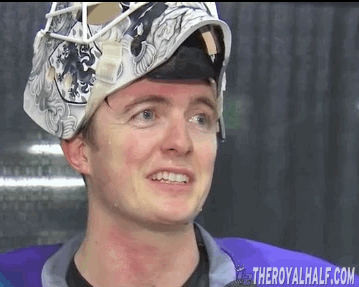I know it's not a stat holiday, but Wayne Gretzky turned 53 a few days ago, and his date of birth, Jan 26th, should really be a nationally recognized day of some sort. It was also the Grammies that same day, so... yeah, I dunno, I needed motivation for a title.
Methodology
I evaluated forwards, defensemen, and goalies separately, in the sense that I removed any positional drafting strategy from the picture; you could think of there having been three separate drafts, one for each position. Further, after running the numbers it seemed that prospects were skewing things (Drouin would have been deemed the worst pick in the draft). I thought about removing them entirely, or selectively removing those that had played very few games, but then I decided to create yet two more distinct groups: prospect forwards and prospect defenders, defined simply as those players born in 1991 or later (they could be on your scoring roster at the moment). NB: no prospect goalies were selected.
With now effectively five clusters of draftees, I did the following to each. I compared the order in which players were selected ("list A") to the very same players sorted by points to date ("list B"). Accordingly, each player in list A had a corresponding player in list B that should have been selected in that draft position. I subtracted the point total of the player in list B from that of the corresponding player in list A to give the draftee value. I sense confusion and I haven't even published this yet. Here's a very simple hypothetical example:
Let's imagine a draft of five forwards. Ovechkin, then Crosby, then Kane, then Getzlaf, then Tavares. The table below shows this very order of selection on the left (list A) with current point totals in the adjacent column. On the right, those same players are listed in order of their points to date (list B). Players in the same row are considered "corresponding players", and as I explain above, the corresponding player in list B is the player that should have been selected. Point totals from the list B player are subtracted from that of the list A player to give the draftee value.
Never mind that Kyle "the knock-out" Okposo actually has more points than Ovechkin (to make the number one pick of Ovi seem even worse). Nobody in this hypothetical draft picked Okposo, so nobody is gaining or losing anything from his exclusion from the analysis. The same can be said for players like Reilly Smith who were not actually selected in our draft. They don't effect anything either way.
Hopefully, you now get a sense of what I've done and it feels somewhat intuitive. The final piece was simply averaging the draftee values for each GM. I've included a few other bits of information. The "without prospects column" shows the average draftee value by removing prospects from the picture entirely. This number might be a truer indicator for those who feel that, for instance, Seth Jones was indeed a better pick than Torey Krug. Nevertheless, under the scheme that I have used and "officially" ranked everyone's performance, prospects are compared against one another in terms of their performance this year and nothing further. So take the average draftee value for what it's worth.
I've also listed each GM's picks in order of highest to lowest value and included the overall draft position in which they were selected. This might give some of you reason for pause and reflection on just where everything went wrong and how you might better take your coffee breaks during next year's draft. Or it might all just be dumb luck.
Some Observations
- Well no matter how you slice it, prospects included or not, the Mackhawks GM performed the best on September 29th of last year, earning nearly 6 points per pick on "the field".
- The Los Samjawors Kings GM performed the poorest, but that is in large part because my system tells me Drouin cost him 36 points as the second prospect taken; funny enough, the second highest scoring prospect--the guy that should have been picked instead of Drouin--was Jaden Schwartz, later selected by these very Los Samjawors Kings!
- Removing the prospects entirely from the analysis, it was actually the Schizzarks GM who laid the biggest egg at the draft. That's what you get when the combined age of the guys you select first and third is 84.
- Alfredsson, S. Koivu, Hartnell, Letestu, Zajac, Emery, and Johansson all went exactly where they were supposed to go (ie. have a draftee value of 0)... so did some dumb prospects, but whatever...
Best Picks
Worst Picks
There are indeed several other things to bear in mind which impair this analysis, such as:
- the "ceiling effect" for good players being selected early
- the fact that for the most part only 4 or 5 of these draftees are actually contributing to scoring rosters
- each team's own positional strategy, partly determined by the positional composition of keeper rosters going into the draft
- injuries, of course, though not sure they impair the analysis per se, because they are a big part of the outcome of this league
So while it may not be fair to think of the Mackhawks as having gained exactly 5.7 points per pick on the rest of us, I do believe this breakdown gives a fairly accurate picture of what took place exactly four months ago in terms of who were on their game and who have only themselves to blame. So before anyone goes daftly dismantling their core before next year's draft, remember:
"All ends with beginnings... we've come too far to give up who we are"




























